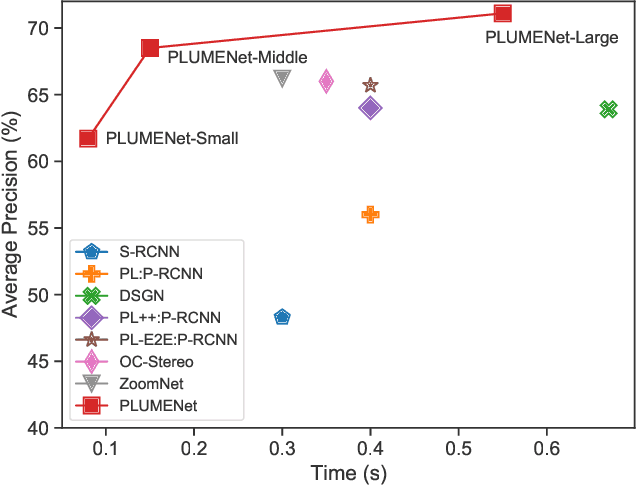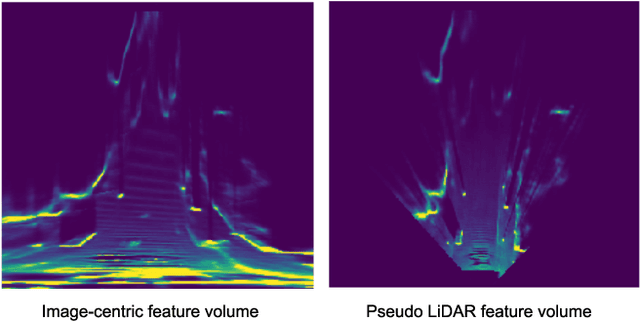PLUME: Efficient 3D Object Detection from Stereo Images
Paper and Code
Jan 17, 2021



3D object detection plays a significant role in various robotic applications including self-driving. While many approaches rely on expensive 3D sensors like LiDAR to produce accurate 3D estimates, stereo-based methods have recently shown promising results at a lower cost. Existing methods tackle the problem in two steps: first depth estimation is performed, a pseudo LiDAR point cloud representation is computed from the depth estimates, and then object detection is performed in 3D space. However, because the two separate tasks are optimized in different metric spaces, the depth estimation is biased towards big objects and may cause sub-optimal performance of 3D detection. In this paper we propose a model that unifies these two tasks in the same metric space for the first time. Specifically, our model directly constructs a pseudo LiDAR feature volume (PLUME) in 3D space, which is used to solve both occupancy estimation and object detection tasks. PLUME achieves state-of-the-art performance on the challenging KITTI benchmark, with significantly reduced inference time compared with existing methods.
 Add to Chrome
Add to Chrome Add to Firefox
Add to Firefox Add to Edge
Add to Edge